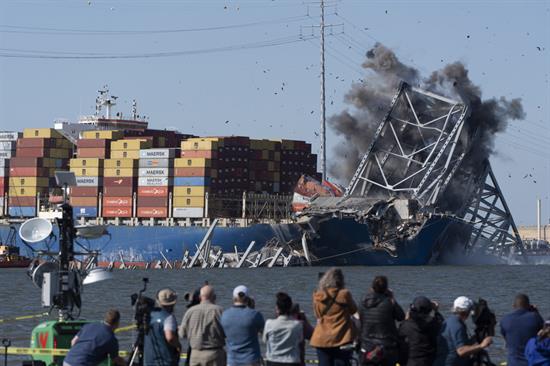In The News
Republicans question Baltimore bridge replacement cost
Washington,
May 15, 2024
Tags:
Transportation
By Mike Lee The bridge was destroyed when a cargo ship lost power and plowed into one of its support piers early in the morning of March 26, killing six construction workers. Maryland officials have estimated the replacement cost at $1.9 billion, and the administration has pledged to pay 100 percent of the cost. The federal government has paid the full cost after other bridge-related disasters, including the 2007 collapse of the Mississippi River bridge in Minneapolis, Federal Highway Administrator Shailen Bhatt said. The costs of the Baltimore disaster will be offset by insurance and legal settlements, including a $350 million policy that the state of Maryland has on the bridge, he said. But the Maryland bridge was a state-owned toll bridge, Rep. Scott Perry (R-Pa) and others said at a committee hearing Wednesday. Since the crash, the Federal Highway Administration has designated the bridge as an interstate facility, allowing the federal government to pay for 90 percent of the replacement cost. Still, Perry said, "If you're from Washington state, likely you're never going to travel across that bridge but you're sure going to pay for it." Rep. Brian Babin (R-Texas) noted that the cargo ship was registered in Singapore. "In my view, the company or the country responsible ought to pay for this," he said. It wasn't clear how widespread the resistance was among the committee members or among House members in general. Chair Sam Graves (R-Mo) said he wants to have a firmer estimate of the cost before deciding how much the federal government should pay. Appropriations Chair Tom Cole (R-Okla.) signaled last month he was open to paying the full cost of the bridge. The cargo ship that destroyed the Francis Scott Key Bridge suffered a series of electrical failures in the minutes before the crash that disabled its main engine and limited the ship’s steering, the National Transportation Safety Board said in a preliminary report issued Monday. The approach to the bridge was protected by concrete barriers called dolphins, but the Dali drifted between them. The pier supporting the bridge was surrounded by a concrete and timber barrier that measured 100 feet by 85 feet, but it wasn’t large enough to stop the ship. NTSB Chair Jennifer Homendy said the safety board is studying the barriers around the Baltimore bridge and at other bridges that can provide examples or more effective barriers. The Baltimore bridge opened in 1977, and its protection systems weren’t designed for the massive cargo ships in use today. "It's the vessels that are getting larger and not just width, but height with containers," she said. "It's important that states and other bridge owners are looking at, from a risk assessment standpoint, what is now going through, what is the vessel traffic and how is our infrastructure protected." |

